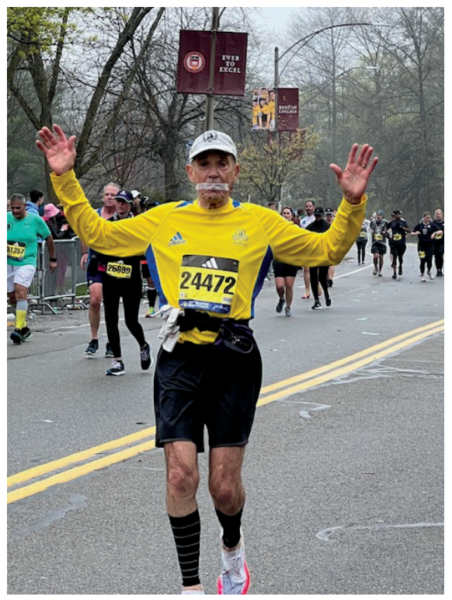Dr. Bill Hang writes about how choosing healthy options, including exploring airway and sleep-breathing disorders, can increase your years and quality of life.
 by Bill Hang, DDS, MSD
by Bill Hang, DDS, MSD
A New Book
I recently finished reading one of the dozens of books on health/longevity that I’ve read in the last few decades. Outlive by Peter Attia, MD, is one of the better written, comprehensive, well documented, and practical books on the subject of longevity. It is the first one I’ve seen making liberal use of the word “healthspan” vs. “lifespan”. This is an important distinction which makes sense to most people. Attia encourages the reader to think rather than blindly follow the supposed one and only path to longevity which typically is the goal of so many books selling a specific diet, supplement, exercise plan, etc. He emphasizes lifestyle, personal choice, and personal responsibility decisions as being the path to achieve a long “healthspan”. He encourages each reader to develop his/her own “evidence-informed” plan which, to me, is the only way forward.

My Professional Experience
I’ve spent the last 30 years of my professional life trying to help patients reverse or prevent problems which occur due to lifestyle choices endemic in all industrialized societies. Specifically, we sought to help growing children have better “healthspans” by becoming 100% nasal breathers with proper rest oral posture which develops the face forward to optimize their airways. I’ve also treated hundreds of teens and adults whose airways were reduced by poor rest oral posture causing unfavorable vertical facial growth. Others we treated had their forward facial growth stunted with retractive orthodontic treatments. Like everyone, I had my successes and my failures. Much of the success I had hinged on the patient accepting a significant role in their own treatment. How refreshing it is to see a book like Outlive recognize and address these issues from a medical perspective!

A Poster “Child” for Victory
The significance of this all came together in the space of less than 15 minutes this past week when my wife and I went to breakfast at a popular local restaurant in a town where we practiced orthodontics for many years. Sitting at the table next to us was a now 103 year old man we first met soon after we moved there. In 1975, he was to me “an older man” I played tennis with and looked up to. He physically resembled my mother’s father in every way down to the exact same balding pattern! He and my grandfather also shared the same gentle personality type, were both funeral directors in small towns, never spoke negatively about others, and were universally loved by all. My grandfather smoked and died at 76. This man never smoked, continued an active lifestyle, and apparently to this day has a good “healthspan”. I suspect that he has done many things right as described in Outlive. He is a victorious poster child for that book and role model for all.
I have responsibility to share the valuable lessons my patients taught me.
A Poster Child for Our Collective Failure as Health Care Professionals
At the very same breakfast, we talked with a woman who was lamenting about her 14.5 year old grandson. The boy and his mother (the woman’s daughter) live with her and her husband. Grandma is very involved in raising this boy. She described him as being very fidgety, diagnosed with ADHD, impossible to get out of bed in the morning, late to school most mornings, etc. She noted that he has been told by teachers that “you will never amount to anything unless you learn to sit still” and has indicated he plans on quitting school as soon as he is old enough to legally do so. My heart sank as I remembered similar children with very unfortunate lives. I asked her all the usual questions that anyone involved with sleep/breathing disorders knows to ask. Her responses were 100% predictable and confirmed my concerns.

Dr. Steven Sheldon, now retired as head of Lurie Children’s Hospital Pediatric Sleep Clinic, often said, “I do not believe there is such a thing as ADHD. I believe it is ALWAYS a sleep/breathing disorder.” He would always footnote that statement with the fact that he cannot prove it, but those are pretty strong words for a published researcher like Dr. Sheldon. I related his statement to this grandmother, and she listened intently. I could see some hope in her eyes.
In 14.5 years, no one in medicine, dentistry, or the educational establishment recognized the obvious sleep/breathing disorder. Sadly, there are only a few communities in the U.S. where his problems would have been recognized very early – if they were recognized at all. I gave the woman some ideas for her to explore and the name of a person I have trained in my E.C.H.O. Mentorship who lives about 2 hours away in a neighboring state. I know there are treatments that may help him, but also know there are no guarantees with any treatment. I also know the incredibly bad consequences which may occur by doing nothing. Were he my grandson, I would be moving mountains to find and try solutions which have proven to help so many others in hopes that he might be helped also.
My Personal Experience with Similar Tragedies
In my practice, I had many kids who’ve confronted similar failure in unfortunate ways. I had more than one become involved in drugs and die of drug overdoses. Others got on the wrong side of the law. A poster child for this is the story of a close friend from my grade school years. Ron was in my class but a year older, because he had “flunked” a grade. He was a chronic mouth breather with a nasal voice, narrow maxilla with a V-shaped incisor segment, long face, and a sugar addiction. When he was doing poorly in elementary school, his dad told him he would “never amount to anything”. His older sister did well in school which didn’t help his feeling of failure. As the object of much teasing, his main coping mechanism was to be the “class clown”. At lunch time, he gave away bagfuls of candy to buy friendship from classmates. He couldn’t sit still and would have received the ADHD label had that diagnosis existed when we were kids.
He graduated high school unable to write a complete sentence. I strongly suspect he suffered brain damage from what we now call OSA. Today, researchers like Ron Harper, PhD, at UCLA or David Gozal, MD, might use MRI’s to document which specific areas of the brain were affected. His sugar addiction resulted in him ballooning from a string bean as an adolescent to obese by his early adulthood. He lost all his teeth by his late 30s as a consequence of his massive sugar intake, chronic mouth breathing, etc. Although, as adults, we lived a thousand miles apart in different states we stayed connected via phone and occasional personal visits when I returned home to visit my parents. Sadly, he died of liver cancer in his early 60s. The memory of his appearance 2 weeks before he died still haunts me. Everyone working in the airway arena probably knows similar stories with similar tragic outcomes.
I hope that my words and suggestions to this grandmother gave her hope and guidance to find help for her grandson to have a more favorable outcome.
A Call to Action…We Owe Our Kids a Better Future
In less than 15 minutes, I had concrete examples of victory and tragedy in the battle to optimize “healthspan” as described by Peter Attia in Outlive. Reflecting on one year of retirement after 50+ years of orthodontic practice, I’m indebted to the patients who trusted me to treat them. I now have responsibility to share with other professionals the valuable lessons my patients taught me. Books and days like I just experienced motivate me to help others develop skills which can bring change for the better. We can’t rest until every town of any significant size in North America has teams of people who can collaborate, recognize airway problems early, and provide effective treatments to produce better healthspans for all. And why stop with North America? The World needs our help.
Every dental practice has patients with similar issues (or worse) than my friend Ron. We cannot turn our backs on these kids by pretending there is no problem just because there is no guaranteed solution. Not having bulletproof RCT’s at the top of the “evidence pyramid” supporting our every action is no excuse for inaction. We must act forcefully with the best “evidence-informed” treatment approaches as Peter Attia suggests. We are in our infancy understanding the airway pandemic. We do not have all the answers, and must find better solutions than the current ones. It is my hope that this story helps motivate others to work together, to act, to do the research, and improve our batting average of success for the people we seek to help. Future generations are depending on new leaders – perhaps like YOU – to carry the torch for others to see.
Healthy options for pediatric patients can involve orofacial myofunctional therapy. Read “Pediatric Orofacial Myofunctional Therapy: The Four Myo Domains,” to read more about airway, feeding, structure, and speech, at https://dentalsleeppractice.com/clinical-spotlight/pediatric-orofacial-myofunctional-therapy-the-four-myo-domains/


 Bill Hang, DDS, MSD, practiced orthodontics in Vermont from 1975 to 1996 and in California from 1997 until his retirement in November 2022. He currently lives in Flat Rock, NC. Having been traditionally trained, he extracted teeth for crowding and often retracted the teeth. For the last 40 years, however, he has been a pioneer in non-retractive treatments to improve the airway in patients of all ages and founded OrthO2Health.
Bill Hang, DDS, MSD, practiced orthodontics in Vermont from 1975 to 1996 and in California from 1997 until his retirement in November 2022. He currently lives in Flat Rock, NC. Having been traditionally trained, he extracted teeth for crowding and often retracted the teeth. For the last 40 years, however, he has been a pioneer in non-retractive treatments to improve the airway in patients of all ages and founded OrthO2Health.